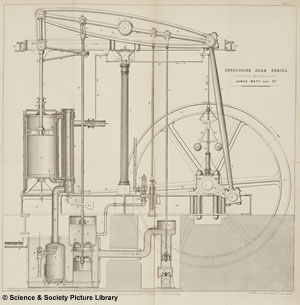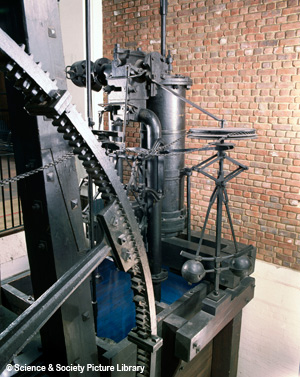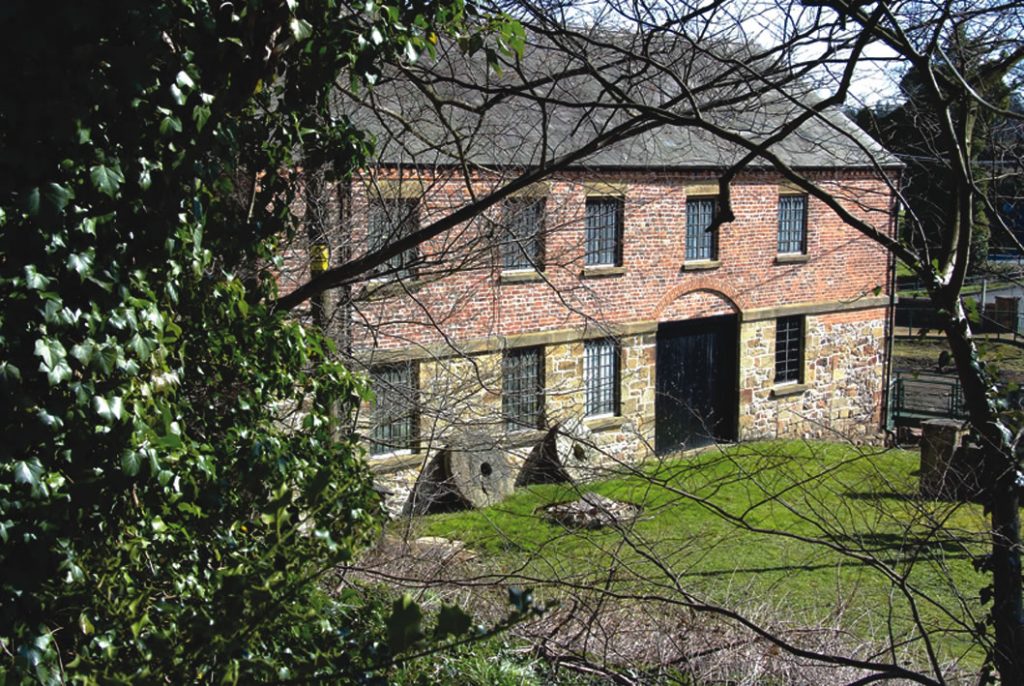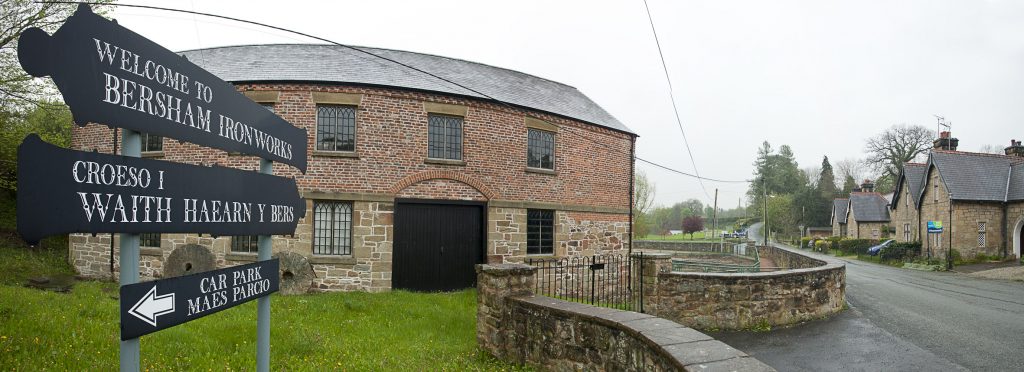Made famous by John ‘Iron Mad’ Wilkinson, a leading figure in the Industrial Revolution, the once noisy Bersham Ironworks now nestles quietly in the attractive Clywedog Valley, two miles outside Wrexham in north-east Wales.
Guided tours for groups available on request. Contact Wrexham County Borough Museum & Archives on 01978 297460 for details.
Directions
Follow brown signs marked Bersham and Clywedog from either the A525 onto the B5098, the A483 onto the B5605 and B5098, or the B5099 west of Wrexham. Look out for brown signs marked Gwaith Haearn Ironworks.
Bersham Ironworks – The Early Years
There was an ironworks at Bersham in the mid 17th century.
Bersham was a great location for making iron. The ironmaster needed iron ore, charcoal, limestone and water-power. In the 18th century he needed coal as well. All were available nearby:
- Coal and iron ore from pits in Ponciau, Rhos and Llwyn Einion.
- Limestone from quarries in Minera.
- Charcoal from the woods around Coedpoeth.
- Waterpower from the River Clywedog.
There was also a growing market for iron goods in Wrexham and Chester.
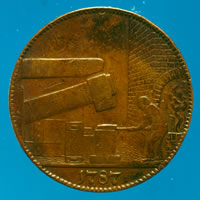
Charles Lloyd, a friend of Abraham Darby of Coalbrookdale (Abraham Darby was the famous ironmaster from Shropshire. He pioneered the production of iron using coking coal – a key event in the Industrial Revolution.), built a blast furnace here in c. 1717 to supply the Pont y Blew forge in Chirk. In the 1730s Bersham ironmasters started to make cast iron goods like cooking pots, but there were problems. Raw materials’ costs were increasing, the price of iron varied and making cast iron was difficult. Successive ironmasters failed.
In 1753, Isaac Wilkinson, a north-country ironmaster and inventor, keen to find an ironworks with potential, took over Bersham Ironworks. He expanded the works and made pots, pipes, rollers, and armaments, but he too was in financial trouble by 1761. His son, John Wilkinson, was more successful.
I understood Bersham Furnace ceased this day blowing with charcoal and went on blowing with coakes for potting.
John Kelsall, diary entry, December 3rd 1721.
The Talented Mr Wilkinson
John Wilkinson was born in 1728 in the village of Clifton, near Penrith in Cumbria. He had a good education and served as an apprentice to a Liverpool ironmonger (18th century ironmongers were manufacturers and dealers in the iron trade). He also worked alongside his father, Isaac, in the foundry and learned how to make cast iron.
He married Anne Mawdsley, his first wife, in 1755 and moved with her to Wrexham. She died a year later and left him enough money to start his own business.
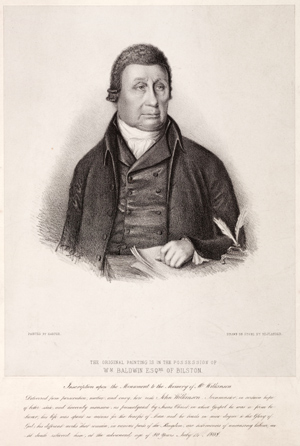
In 1757 Wilkinson took over a struggling ironworks at Willey in Shropshire. It was well-timed as the Seven Years War (1756–63) increased demand for the cannons the ironworks made. Wilkinson could also see the new peacetime markets for iron and gained a reputation for producing high quality cast iron parts for Newcomen steam engines.
Wilkinson managed Bersham Ironworks for his father, but he was ambitious. His marriage to Mary Lee, his second wife and a Bersham Ironworks shareholder, was not solely for love. Gradually he bought out the partners in his father’s business. By 1763 Isaac Wilkinson had to accept his son was in charge.
John Wilkinson was not only a shrewd businessman. He was a great experimenter and inventor. He constantly looked for new and better ways to make iron, to run an ironworks and to make accurate castings.
Wilkinson’s search for ‘truth’ as eighteenth-century industrialists called accuracy in castings made him a central figure in the Industrial Revolution and a very wealthy man.
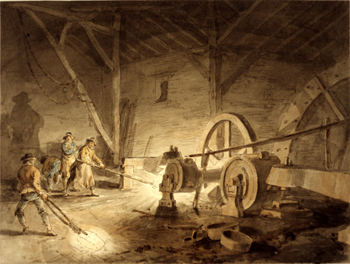
I think it better to work than write. Indeed a man that hath not the former to do – may amuse by penning long.
John Wilkinson, on work and probably aimed at his brother.
Making Iron
Until the 18th century iron was made using ironstone (iron ore), limestone and charcoal. In 1709 Abraham Darby smelted the first iron using coke, a purer form of coal. The Bersham ironmasters first made iron in a blast furnace using coke in 1721.
Pig iron is the iron straight from the blast furnace.
Cast iron objects are made in a foundry. Cast iron is very hard, but it is brittle and will not bend. It was useful for making cannons, cylinders, engine parts and decorative railings.
Wrought iron objects are made in a forge or smithy. This purer form of iron was used to make weapons and tools.
Since the 19th century, steel (a form of iron containing a controlled amount of carbon) has replaced cast and wrought iron. Steel can have the qualities of both and none of their drawbacks.
Boring for Britain
Britain needed safe and accurate cannon, but many iron companies’ cannons were neither safe nor accurate.
The Board are greatly alarmed at the frequent bursting of the Guns cast by the Carron Company of late which must be owing to some fault in their construction or the Badness of the Metal.
Board of Ordnance Office minute, March 22nd 1771.
John Wilkinson started work on a new way to make cannon. Wilkinson cast the iron cannon solid, unlike earlier ironmasters. He used a drill and then a ‘boring bar with cutters or knives’ to make an accurate bore.
In 1774 the Board of Ordnance tested Wilkinson’s new cannons. They were a huge success. The Board ordered all cannons to be made Wilkinson’s way. Rival companies tried to find out exactly how Wilkinson made his cannon. The French learned of Wilkinson’s success and even sent an agent, Brigadier Marchant de la Houlière to find out the secrets of Bersham Ironworks.
A Tremendous Bore
James Watt’s steam engine powered the Industrial Revolution. He patented his invention in 1769. However, Watt’s engine needed accurately made cylinders to work properly and Watt couldn’t find any cylinders made to the standards he required. Only the best ironmaster and engineer could solve Watt’s problem. In 1773 Matthew Boulton, Watt’s new business partner, introduced him to John Wilkinson.
Wilkinson experimented. Initially he tried adapting his cannon boring machine. Then he built a new machine at Bersham that could bore cylinders of various sizes. In April 1775 Wilkinson delivered the cylinders to Watt in Birmingham and the steam engine worked. In 1776 the two inventors installed a steam engine at Wilkinson’s blast furnace in Bradley, Staffordshire. It was a great success. Orders soon followed from other ironmasters. The engines were sold to use in the mines and the cotton mills. Boulton & Watt recommended all their steam engines be fitted with Wilkinson cylinders made at Bersham.
Wilkinson hath bored us several cylinders that doth not err to the thickness of an old shilling in no part.
Matthew Boulton, 1776
The Wilkinson Empire – The Heartlands
John Wilkinson’s business empire centred on his ironworks at Bersham, Bradley (Staffordshire), Willey (Shropshire), and later at Brymbo.
His businesses included industries vital to his ironworks: collieries, ironstone supplies, limestone quarries and limekilns. He invested wherever money could be made, especially in the metal industries (lead, copper and tin) and canals.
Until 1795 Wilkinson was closely connected with Boulton & Watt in Birmingham supplying cylinders and engine parts for their steam engines. Wilkinson preferred to concentrate on the ‘engine’ business as he saw it as more profitable in the long term than cannon making.
Wilkinson explored new uses for iron at every opportunity. He was the catalyst for the idea of building an Iron Bridge at Coalbrookdale. Along with his friend, Abraham Darby III, he provided the finance for its construction.
The Demands for Guns & Ordnance bring great and pressing and with the Engine Work taking so much time, room and men that would dispatch 10 Tons in Armament for one of the latter… I should consider it a favourable Circumstance at this time if Engine Orders had been more slack. However, I shall continue to sacrifice to the Engine Branch as I have done – considering it a more lasting Trade than the other which the Present War alone occasions.
John Wilkinson to James Watt, August 3rd 1779
The Wilkinson Empire – The Wider World
John Wilkinson’s business was dependent on events in the wider world. Wars increased the demand for armaments, but hindered the export trade.
He mastered the skills of cannon making and built up his first successful ironworks business during the Seven Years War (1756 – 63). The American War of Independence (1775 – 83) increased demand further still. The Royal Navy expanded its fleet and Wilkinson was a leading supplier for ships’ cannon.
Wilkinson’s reputation in the iron trade gained him customers abroad. Monsieur Périer approached Wilkinson to supply water pipes and pumping engines for his new waterworks in Paris. It was a huge contract that brought Wilkinson much trouble: pirates threatened his ships, Royal Navy press gangs took his sailors and Government export licences were hard to obtain.
Any trade with France was risky during wartime. A Shropshire shopkeeper mistook “cylinders of the most unusual thickness” for cannon and reported Wilkinson to the Government for selling arms to the enemy. Wilkinson was eventually cleared by Customs investigators.
This curs’d war will be the ruin of the Engine Branch in France. I see nothing but expense and difficulty on every side. While the Impress Act attracts by sea – the Militia Bill operates by land.
John Wilkinson, Bersham, July 2nd 1779
Forging Ahead
John Wilkinson took control of Bersham Ironworks in 1763, with his brother William as junior partner and manager. Initially, the ironworks continued as before.
During the 1770s and 1780s Wilkinson won increased orders for cannon and engine parts. Building on his father’s improvements to the ironworks, John was able to expand to the south and to open a new eastern ironworks on this site. It was during this period he built a new boring mill, air furnaces, an octagonal cannon foundry, and a series of cottages for his workforce. He also established a rolling mill here where boilers for the new steam engines were manufactured.
Bersham Ironworks received orders for its cast iron products from all around Britain. Wilkinson sent goods to Chester for loading onto ships, and to Preston Brook for deliveries via the canal system. Bersham Ironworks was a twenty-four hour operation, but it still struggled to meet its customers’ demands. In 1792 Wilkinson purchased the Brymbo estate where he was able to establish a modern ironworks from scratch, with its own supplies of coal and iron on site. This new works heralded Bersham’s decline.
The lease from Mr Myddelton comprehends the Cylinder and Gun Foundrys. The Boring Mill at the Place call’d the Rolling Mill and where we make Boylers, about 40 workmen’s houses and the waterworks secured so as to need very few repairs. As to Bersham old furnace: There are Two Wheels – one of which we bore at, the other is for the Joiner & Turners Shops. Mr Turner, Mr Gilpin, Abraham Storey & John Clayton, moulder, have their houses and gardens upon this part. The counting house, stables and twenty acres of good land.
William Wilkinson, letter to James Watt Junior, 1796
John Westaway Rowe sketched Bersham Ironworks in c. 1780. Imagine you are on the dual carriageway (A483) and looking up the valley. This is what you would have seen.
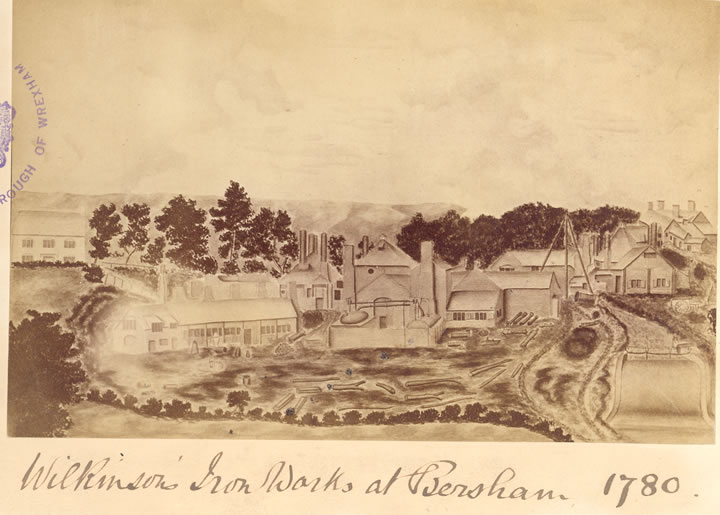
Bersham Ironworks – the Eastern Site. John Westaway Rowe sketched the eastern ironworks at its peak. It is difficult to be definite about the use of all the buildings in the picture.
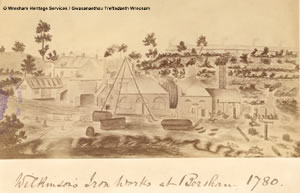
Wicked Will
William Wilkinson moved to France in 1777 at the invitation of the French Government. He modernised the State Ironworks at L’Indret (near Nantes), established a new ironworks and cannon foundry at Le Creusot (Burgundy), acted as an ironworks consultant in Germany and Scandinavia, and made himself a wealthy man.
Returning to Bersham just before the French Revolution, William soon fell out with his older brother, John, over money and the management of his business. William felt he had not received his share of the profits. The dispute turned bitter as neither man would back down. John stopped William from seeing the accounts, excluded him from his new venture at Brymbo and halted production at Bersham.
In 1795 the dispute went to arbitration, neither brother would be in the same room as the other and it was agreed to sell Bersham Ironworks so William could have his share of the business. William tried to buy the works, but Boulton & Watt declined to back him financially. John Wilkinson bought the works, paid his brother £10,650 for his share, and moved the equipment from the eastern works up to Brymbo.
An embittered William took his revenge. He told James Watt Junior that John had been selling pirated versions of Watt’s steam engines and had been pocketing the royalties for himself. William even showed James Watt Junior the pirated engines at Brymbo when John was away on business. Boulton & Watt pursued John for the royalties. The long friendship between the three men came to an end and John had to pay Boulton & Watt £4,425 to avoid charges of embezzlement. Meanwhile William spread increasingly vicious gossip about his brother and secretly encouraged skilled workers to leave Bersham and Brymbo to work at Boulton & Watt’s new foundry in Birmingham.
William and John were never reconciled.
‘The End of Bersham Ironworks’ – A story written by James Stockdale in 1872
“William Wilkinson collected a great number of men in the town of Wrexham in Wales, and marched with them to the large ironworks at Bersham, and there, with sledge hammer and other instruments, began to break up the expensive machinery. On intelligence of this reaching John Wilkinson, he collected a still greater number of men and followed exactly his brother’s example, so that in a very short time the famous Bersham Ironworks became a great wreck, each brother appropriating to himself as much of the spoil as came within his reach.”
I was at Bersham three days ago… All the mills in the meadows are completely dismantled. The axe and saw with a number of horses have been fully employed these 3 weeks in pulling all to pieces.
William Wilkinson on his bother’s dismantling of Bersham Ironworks, letter to James Watt Jr., January 3rd 1798
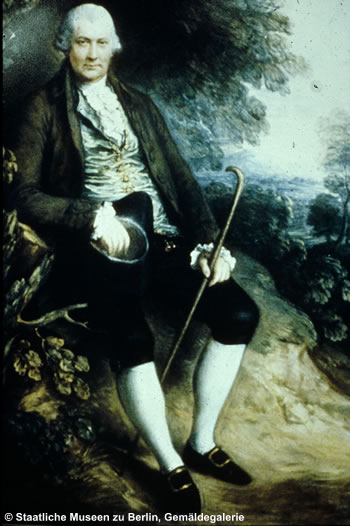
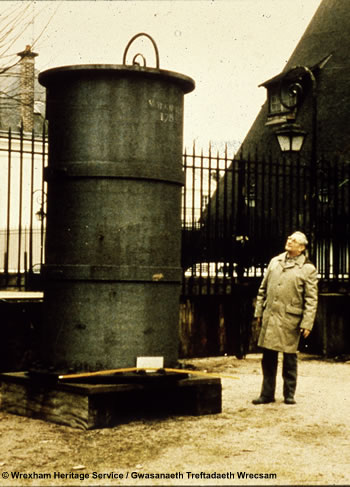
Larger Than Life
John Wilkinson was a man of his times. He supported the ideals behind the French Revolution and the American Declaration of Independence. He opposed the power of the Church and the Crown. He was an associate of the Lunar Society (a group of Midlands industrialists and thinkers who met to discuss science, industry, art, medicine and politics) and close friend to Joseph Priestley, the chemist and political thinker. He helped Priestley after a ‘church and king’ mob destroyed his house and laboratory in Birmingham in 1791. Wilkinson set up guns at Bersham, near Wrexham, and at his Staffordshire ironworks, as he feared his revolutionary beliefs made him a target for the mob too.
Nicknamed ‘Iron Mad Jack’, Wilkinson was obsessed by iron and its possible uses. In 1787 to the astonishment of the many sceptics, he launched an iron boat. The boat was designed to carry freight on canals and was ahead of its time. He also built an iron chapel and inside it had an iron pulpit. Not even death would separate him from his beloved metal; he even had an iron coffin made for his own use.
His tokens sum up his character best. On one side they featured forge hammers and anvils, while on the other side was his profile. He was the only commoner to appear on any British coin in the 18th century.
Manufacture and Commerce will always flourish where Church and King interfere least.
John Wilkinson
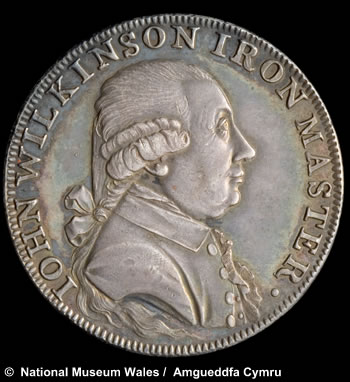
Wilkinson issued his own tokens from 1787 as coin was in short supply. Made in Matthew Boulton’s factory, Wilkinson used the tokens to pay his workforce. He issued leather, copper and silver tokens, as well as one guinea notes. The tokens were stored at his counting house in Bersham. Forgers and commentators poked fun at Wilkinson for putting his own face on his tokens.
John Wilkinson – His Impact and Legacy
John Wilkinson was a leading figure of the Industrial Revolution. His boring machine made the accurate cylinders that brought Watt’s steam engine to life. With his encouragement, James Watt designed the first steam engine that could power machinery. Industry could break free from its reliance on waterpower and be situated close to its raw materials or its markets.
Wilkinson patented his own inventions: a steam powered rolling mill and a cupola furnace for making high quality castings. His brilliance in making engine parts helped mechanise the industries that made Britain the leading industrial power in the 19th century. Meanwhile, his cannon boring machine and skill in rifling supplied the Royal Navy with the most accurate cannon in the world.
Wilkinson explored new techniques in iron making up to his death in 1808. He was buried in an iron coffin beneath an iron obelisk in Cumbria. His nephew disputed Wilkinson’s will that left the business in trust to his mistress, Anne Lewis, and their three children. In 1823 The Court of Chancery, after fifteen years of legal wrangling, decided in favour of Anne and the one loyal trustee, James Adams.
Meanwhile the business had suffered: Bersham Ironworks closed in 1812. Only Brymbo Ironworks survived to carry the ambitions of Wilkinson, the King of Ironmasters, into the future.
The cylinder and the fitting of the piston were beyond my most sanguine hopes. It seemed to be truth itself.
James Watt on the importance of Wilkinson’s cylinders to his steam engine.
